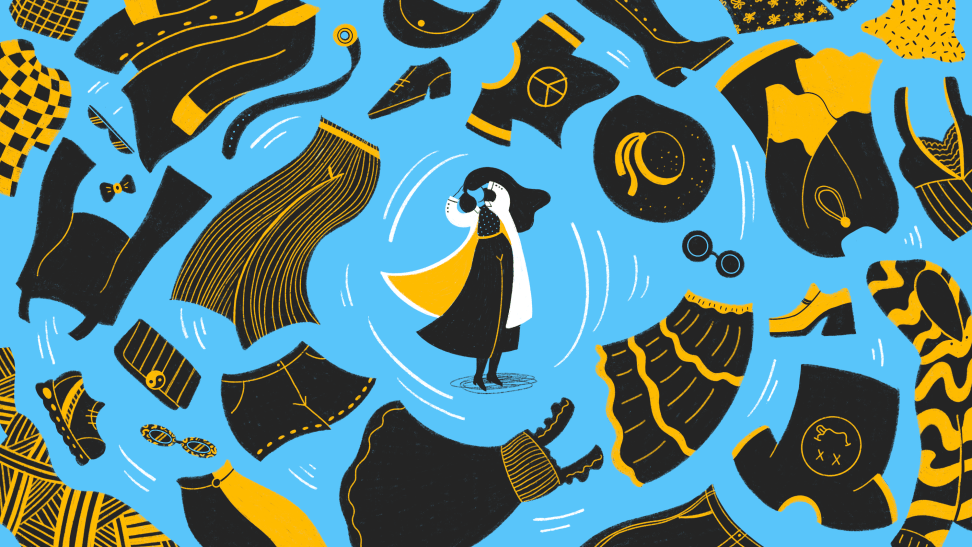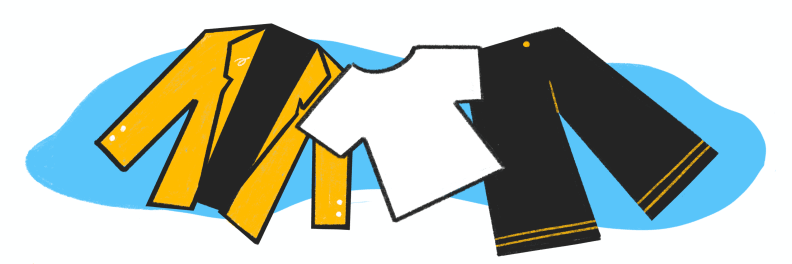 Credit:
Reviewed / Tara Jacoby
Credit:
Reviewed / Tara Jacoby
Recommendations are independently chosen by Reviewed's editors. Purchases made through the links below may earn us and our publishing partners a commission. Prices were accurate at the time this article was published but may change over time.
With Boohoo’s new arrivals section boasting over 1400 styles, and Pretty Little Thing offering dresses for $10 and under, it’s safe to say that fast fashion is a little too comfortable. It’s becoming too common for every event in our lives to require a new outfit. And as exciting as that may feel, the constant newness and the need to have fresh content for social media has warped our perspective so we think of clothing and shoes as being disposable. For example, just five years ago consumers in the US sent over 9 million tons of clothing and shoes to landfills around the country.
So how can you enjoy fashion, but remove yourself from the vicious style of fast fashion? We chatted with Julia Gall, sustainability-focused stylist and writer, and Alyssa Hardy, fashion journalist and author of WORN OUT: How Our Clothes Cover Up Fashion’s Sins, to help us get organized and begin our fast fashion detox.
But while we’re addressing the damaging nature of fast fashion, it’s important to address the privilege in being able to even consider “quitting” fast fashion in favor of more sustainable practices. There's a difference between individuals who shop fast fashion because it’s the only clothing accessible to them to meet their physical needs and those who shop consistently for content, “hauls,” and to avoid repeating outfits. Wherever you land in that spectrum, there's something in the following four steps for everyone.
Step 1: Take Inventory of your Wardrobe

Quitting starts with figuring out what you have.
It’s time to take control of what’s happening behind your closet doors. How often do you tell yourself you have nothing to wear, daily or weekly? That exact mindset is what can keep you trapped in an addictive relationship with fast fashion. “When participating in trend cycles, you end up with things you don't like,” says Hardy. “Before I could shop my own wardrobe, I had to organize it.”
A great first step in escaping this relationship is knowing exactly what’s in your wardrobe. Just like your local library takes stock of its inventory, you should too—with your wardrobe. Organizing your wardrobe into distinct categories will provide clarity on what you own, and putting eyes on each piece will remind you exactly what you do and don’t wear. Try dividing up your clothes into the following categories; shirts, pants, skirts, tank tops, button-down shirts, coats, jackets, jeans, etc. As your clothes are filed into each category, you’ll begin to see patterns of behavior in your purchase habits.
Step 2: Know What You Do and Don’t Like.

Loving fashion doesn't mean you have to snap up everything you see.
We know it’s easy to accumulate pieces that aren’t in your lane of style, especially when it feels like trends are popping up daily. “I realized that my love of fashion didn't need to be a love of consuming. Those are two different things. Opting out of the trend cycle requires a complete shift in how I think about personal style,” says Hardy. Understanding why you wear and don’t wear the clothes you already have is key to consuming less.
Fashion may seem frivolous to some, but thinking critically and strategically will help curb constant purchasing. Once you’ve separated your clothes by garment-type, take the time to examine each piece, asking yourself why you do or don’t wear it. Identify similarities between pieces you wear often, and look for trends in styles, colors, and fabrics. Maybe you notice that you’re drawn towards bright primary colors, or that you wear a lot of clothes made from linen. As you narrow down and pinpoint what you gravitate towards, you’ll begin to develop your personal style.
Personal style goes beyond trends. We’re all not into Barbiecore, masculine minimalism, ballet core, or super femme—but the urge to fit in and feel relevant is real. Hardy continues, “I ask myself why I'm feeling the need to buy something new. Often, the desire goes beyond just seeing something cute. The need to fit in is real. Reframing my thought process from feeling like I'm missing out on something, to celebrating my style has helped a ton.”
Understanding yourself and what styles make you feel the most confident is an incredible tool for quitting fast fashion. It leads to the realization that the majority of trends don't fit into your aesthetic, and when you know your taste well enough, you’ll see that many trends aren’t your style so you won’t need to buy into them.
Step 3: Shop your Wardrobe

Don't just get something because you like the brand!
Yes, you heard me right, shop your wardrobe, not a brand. Play with your garments, and pair them together in unexpected ways to see if you have a lightbulb moment (maybe that leather skirt does pair well with your that cream-colored sweater). Approach your clothes with the intention to be creative and make your pieces work for you.
“I am making a habit of trying on my clothes regularly when I’m not in a rush to get dressed for something in order to check fit and see if they spark a new idea of what to pair it with” explains Gall who actively practices shopping her wardrobe.
Don’t be shy about planning out your outfits in advance. Being intentional about which pieces you pair together will lead to more confidence when you step out the door. Try styling a week of outfits in advance to avoid rushing the process each morning. Being in a more relaxed state when choosing outfits will help you gain a better understanding of your own taste for your garments or how you can style them together in the future.
But remember, preplanning outfits doesn’t mean you’re married to those pieces forever. Gall continues, “I really wish I could be a ‘capsule wardrobe’ person, but I get bored really easily. So while I’m constantly itching for fresh pieces, I try to think of this sentiment that really stuck with me: each piece of clothing is a permanent mark on the planet. I don’t remember exactly where I read it but the severity of that thought was enough to sober me to be very cautious about what I summon into my wardrobe, and to what frequency.”
Step 4: If you need something, research the brand

Make sure that brand really is being sustainable.
In the game of quitting fast fashion, research is going to be your best friend.
As the industry becomes more aware of its impact, it’s becoming easier to access information on a brand’s “sustainability” claims. However, because sustainability is an ever-evolving topic and “sustainable fashion” has over 257,000,000 results on google, just the idea of research can feel overwhelming. Key factors that conscious brands consider are sustainably sourced materials, ethical labor practices, lowering carbon emissions, and its products' end-of-life.
Gall shares her green flags when researching brands: “If they’re boasting a B-Corp certification or Fair Trade, the brand is off to a good start as these are pretty rigorous certifications. I then go to a brand's sustainability section of their site to see what information they’re offering. If they don’t have one—that’s a red flag! Organic materials, traceability, and any supply chain information they offer is a good sign they are on the right track.”
Still, not all information is correct information. Greenwashing is real. Platforms like Good On You, Remake, and EcoCult have reliable brand directories that provide clear ratings on a brand’s sustainability efforts and great alternatives to your fast fashion favorites.
Remember, knowledge is power. The more time you take to inform yourself about a brand you’ll be equipped to ween yourself off of fast fashion.
The product experts at Reviewed have all your shopping needs covered. Follow Reviewed on Facebook, Twitter, Instagram, TikTok, or Flipboard for the latest deals, product reviews, and more.
Prices were accurate at the time this article was published but may change over time.





